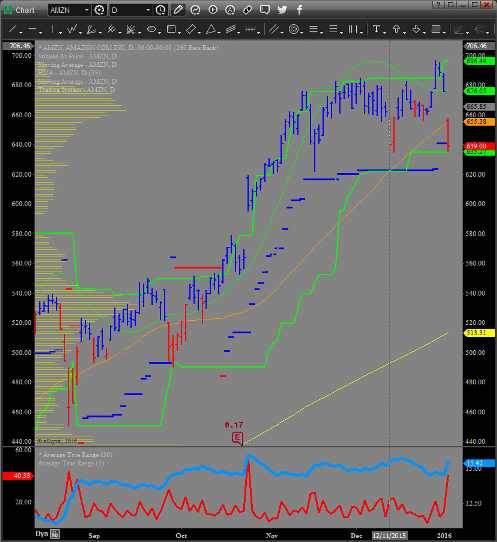We have discussed that selling premium can sometimes be problematic for the retail trader. The margin rules for naked shorts are just too high. We have showed how an iron condor can be used as a way to sell premium (collect a credit) while limiting our risk. We have also showed how one can use an asymmetrical iron condor can add a directional component to this strategy. Today we go one further. We will make the iron condor asymmetrical in two ways. One, we will have our credit put spread be closer to the money than our call spread. Secondly, we will make the width of one of the spreads less than the other side. Here’s what we are seeing.

We note that we see support at 635 and 620. We don’t necessarily think AMZN bounces and turns right around, but we think there’s a very good chance that it’s done going down for the time being. Here’s the signal:
1-4-16: Based on our methodology a signal has been generated:
Buy (opening) the AMZN January 625 strike put
Sell (opening) the AMZN January 630 put
Sell (opening) the AMZN January 680 strike call
Buy (opening) the AMZN January 682.5 strike call
For a credit of $2.25 or more.
This signal is not GTC and is valid with AMZN trading $637 – $640.
So, like a normal iron condor, we have a put spread and a call spread. AMZN was trading at $638 when the signal went out. So, our put spread is about $8 out of the money and our call spread is about $42 out of the money. In addition to selling a $5 wide call spread, our call spread is only $2.50 wide. We have to consider to reward to risk ratios. To the downside, our max reward is the credit we received ($2.25). Our max risk is the width of the spread less the credit or 5.00 – 2.25= 2.75. So our r/r ratio is 2.25/2.75 = 0.82:1, a little less than even money. To the call side, we only risk 2.50 – 2.25 = 0.25. Our reward to risk is 2.25/.25 or 9:1!




